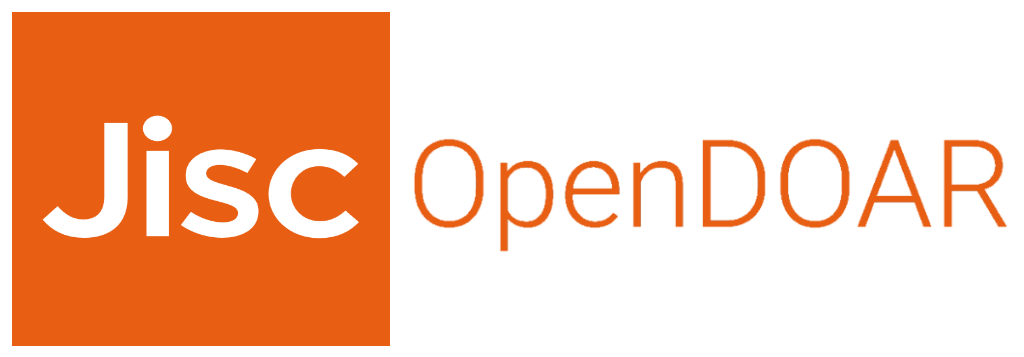Mostrar el registro sencillo del ítem
Determinación de la unión a reticulocitos humanos de los fragmentos conservado y variable de la proteína TRAMP de Plasmodium Vivax.
| dc.contributor.advisor | Hernández Rojas, Edith del Carmen | |
| dc.contributor.advisor | Ricaurte Contreras, Laura Alejandra | |
| dc.contributor.author | Bareño Niño, Daniela Catalina | |
| dc.contributor.author | Aparicio Rodríguez, Giselle | |
| dc.date.accessioned | 2021-05-25T17:52:06Z | |
| dc.date.available | 2021-05-25T17:52:06Z | |
| dc.date.issued | 2020 | |
| dc.identifier.uri | https://repositorio.universidadmayor.edu.co/handle/unicolmayor/91 | |
| dc.description.abstract | Plasmodium sp. es el causante de malaria una de las enfermedades más antiguas, el cual contiene todo un sistema de invasión mediada por proteínas secretadas por diferentes organelos presentes en su estructura, estas proteínas aunque bien caracterizadas y estudiadas, en gran proporción las de especies que concurren en un cuadro clínico en humanos no están cubiertas por procesos de investigación en un 100% por lo que es necesario y la obtención de esas proteínas faltantes de manera in vitro bajo sistemas de expresión y ese es el propósito de este trabajo, pues es un aporte continuo de gran amplitud investigativa que otorga resultados significativos para la comprensión de la misma y a su vez propone un adelanto en procesos de mitigación en la especie Plasmodium vivax En este estudio se obtuvo de manera recombinante la proteína PvTRAMP fragmentada en una porción conservada y una variable de Plasmodium vivax empleando un sistema de expresión procariota Escherichia coli, con un posterior enriquecimiento de reticulocitos humanos a los cuales tiene tropismo y con estos por primera vez fueron realizados ensayos de unión que esclarecen la actividad de dicha proteína y favorecen comprensión de su papel en la invasión, ya que es una proteína que se encuentra en el merozoito lo cual nos indica que puede tener un papel revelador en la invasión a células diana. Se determinó que en efecto los fragmentos variable y conservado de la proteína PvTRAMP poseen capacidad de unión tanto a reticulocitos humanos como a glóbulos rojos maduros, dejando abierta una línea de investigación útil en la propuesta de dicha proteína como componente candidato a la vacuna contra el cuadro malárico causado por Plasmodium vivax | spa |
| dc.description.abstract | Plasmodium sp. It is the cause of malaria one of the oldest diseases, which contains a whole system of invasion mediated by proteins secreted by different organisms present in its structure, these proteins although well characterized and studied, in large proportion the species of species that concur in a clinical picture in humans they are not covered by research processes 100% for what is necessary and the obtaining of those missing proteins in vitro under expression systems and that is the purpose of this work, as it is a contribution continuum of great investigative breadth that provides significant results for its understanding and in turn proposes an advance in mitigation processes in the Plasmodium vivax species. In this study, the TRAMP protein fragmented into a conserved portion and a Plasmodium vivax variable are obtained recombinantly using a prokaryotic expression system Escherichia coli, with a subsequent enrichment of human reticulocytes to which it has tropism and with these for the first time they were They carried out binding assays that clarify the activity of this protein and promote understanding of its role in invasion, since it is a protein found in the merozoite, which indicates that it may have a revealing role in invading target cells. Indeed, it was determined that the variable and conserved fragments of the PvTRAMP protein possess non-specific binding capacity for both human reticulocytes and mature red blood cells, leaving open a useful line of research in the proposal of said protein as a candidate component of the vaccine against the malaria picture caused by Plasmodium vivax. | eng |
| dc.description.tableofcontents | 1. INTRODUCCIÓN 2. OBJETIVOS 2.1. GENERAL 2.2. ESPECIFICO 3. ANTECEDENTES 4. MARCO TEÓRICO 4.1 MALARIA 4.2 CARACTERÍSTICAS DEL AGENTE CAUSAL DE MALARIA 4.3 Plasmodium spp 4.3.1 MECANISMO DE INVASIÒN 4.3.2 CICLO DE VIDA 4.4 GENERALIDADES DE Plasmodium vivax 4.5 CONFORMACIÓN ESTRUCTURAL Y PROTEÍNAS DE Plasmodium spp 4.6 PROTEÍNA TRAMP 5. METODOLOGÍA 5.1 AMPLIFICACIÓN DEL FRAGMENTO CONSERVADA Y VARIABLE DEL GEN pvtramp 5.1.1 MUESTRAS 5.1.2 DISEÑO DE CEBADORES 5.1.3 PCR CONVENCIONAL 5.2 CLONACIÓN DEL FRAGMENTO CONSERVADO Y FRAGMENTO VARIABLE DE pvtramp AL VECTOR pET32b+ 5.3 TRANSFORMACIÓN EN CÉLULAS JM109 Y SECUENCIACIÓN 5.4 EXPRESIÓN DE PROTEÍNAS RECOMBINANTES EN CÉLULAS BL21-DE3 5.5 VERIFICACIÓN DE LA EXPRESIÓN DE LOS FRAGMENTOS DE PvTRAMP POR MEDIO DE WESTERN BLOT. 5.6 PURIFICACIÓN DE LA PROTEÍNA POR CROMATOGRAFÍA DE AFINIDAD USANDO RESINA DE NÍQUEL. 5.7 OBTENCIÓN DE RETICULOCITOS HUMANOS 5.8 DETERMINACIÓN DE UNIÓN DE LA PROTEÍNA RECOMBINANTE PvTRAMP A RETICULOCITOS HUMANOS 6. RESULTADOS 6.1 AMPLIFICACIÓN DE LA FRAGMENTO CONSERVADO Y FRAGMENTO VARIABLE DEL GEN pvtramp 6.2 VERIFICACIÓN DE LA TRANSFORMACIÓN POR MEDIO DE PCR DE COLONIA. 6.3. ANALISIS DE LA SECUENCIACIÓN ENVIADA POR MACROGEN 6.4. WESTERN BLOT PARA LA CONFIRMACIÓN DE LA OBTENCIÓN DE LA PROTEINA EXPRESADA 6.4.1 EXPRESION PILOTO 6.4.2 EXPRESION POR HORAS 6.4.3 EXPRESION A GRAN ESCALA 6.5 PURIFICACIÓN DE PvTRAMP-RC Y PvTRAMP-RV POR CROMATOGRAFÍA DE AFINIDAD USANDO RESINA DE NÍQUEL 6.6 ANALISIS DE UNION DE LA PROTEÍNA PvTRAMP A RETICULOCITOS HUMANOS 7. DISCUSIÓN 8. CONCLUSIONES 9. RECOMENDACIONES 10. BIBLIOGRAFIA 11. ANEXOS | spa |
| dc.format.extent | 105p. | spa |
| dc.format.mimetype | application/pdf | spa |
| dc.language.iso | spa | spa |
| dc.publisher | Universidad Colegio Mayor de Cundinamarca | spa |
| dc.rights | Derechos Reservados - Universidad Colegio Mayor de Cundinamarca, 2020 | spa |
| dc.rights.uri | https://creativecommons.org/licenses/by-nc-sa/4.0/ | spa |
| dc.title | Determinación de la unión a reticulocitos humanos de los fragmentos conservado y variable de la proteína TRAMP de Plasmodium Vivax. | spa |
| dc.type | Trabajo de grado - Pregrado | spa |
| dc.description.degreelevel | Pregrado | spa |
| dc.description.degreename | Bacteriólogo(a) y Laboratorista Clínico | spa |
| dc.publisher.faculty | Facultad de Ciencias de la Salud | spa |
| dc.publisher.place | Bogotá D.C | spa |
| dc.publisher.program | Bacteriología y Laboratorio Clínico | spa |
| dc.relation.references | Tizifa T, Kabague A, McCan R, Van de Berg H, Van vugt M, Phiri K. Prevention Efforts for Malaria. Current Tropical Medicine Reports, 2018;5(1), 41–50 | spa |
| dc.relation.references | White N, Pukrittayakamee S, Hien T, Faiz M, Mokuolu O, Dondorp A. Malaria. Lancet. 2014;383(9918):723-35. | spa |
| dc.relation.references | El informe mundial sobre el paludismo 2019 de un vistazo [Internet]. Organización mundial de la salud; 4 de diciembre de 2019 [Citado enero 21 2020]. Disponible en: https://www.who.int/malaria/media/world-malaria-report-2019/es/ | spa |
| dc.relation.references | WHO. World Malaria Report. 2018 | spa |
| dc.relation.references | World Health Organization. World Malaria Report 2017 | spa |
| dc.relation.references | Baird J, Valecha N, Duparc S, White J, Precio N. Diagnóstico y tratamiento de la malaria por Plasmodium vivax . Soy J Trop Med Hyg. 2016; 95 (Supl. 6): 35–51. | spa |
| dc.relation.references | Preiser P, Kaviratne M, Shahid Khan S, Lawrence Bannister L, Jarra W. The apical organelles of malaria merozoites: host cell selection, invasion, host immunity and immune evasion. Microbes Infect 2000;. 2: 1461-1477 | spa |
| dc.relation.references | Olliaro P, Barnwell J, Barry A, Mendis K, Mueller I, Reeder- Implications of Plasmodium vivax biology for control, elimination, and research. Am J Trop Med Hyg. 2016;95(Suppl 6):4–14 | spa |
| dc.relation.references | Lacerda M, Zackiewicz C, Alecrim W, Alecrim M. The neglected Plasmodium vivax: are researchers from endemic areas really concerned about new treatment options? Rev Soc Bras Med Trop. 2007; 40:489–90. | spa |
| dc.relation.references | Recht, J, Siqueira A, Monteiro W, Herrera M, Herrera S, Lacerda M. Malaria in Brazil, Colombia, Peru and Venezuela: current challenges in malaria control and elimination. Malaria Journal,2017; 16(1). | spa |
| dc.relation.references | Cowman F, Berry D, Baum J. The cellular and molecular basis for malaria parasite invasion of the human red blood cell. Journal of Cell Biology, 2012; 198(6), 961-971 | spa |
| dc.relation.references | Weiss G, Crabb B, Gilson P. Overlaying molecular and temporal aspects of malaria parasite invasion. Trends Parasitol. 2016; 32:284–95. | spa |
| dc.relation.references | Gaur D, Chitnis C. Molecular interactions and signaling mechanisms during erythrocyte invasion by malaria parasites. Curr Opin Microbiol. 2011;14(4):422-428. | spa |
| dc.relation.references | Neafsey D, Galinsky K, Jiang R, Young L, Sykes S, Saif S. The malaria parasite Plasmodium vivax exhibits greater genetic diversity than Plasmodium falciparum. Nat Genet.2 012;44(9):1046-50. | spa |
| dc.relation.references | Ellis R, Sagara I, Doumbo O, Wu Y. Blood stage vaccines for Plasmodium falciparum: current status and the way forward. Hum Vaccin. 2010;6(8):627-34. | spa |
| dc.relation.references | Garzón D. Identificación de señales de selección natural en genes de Plasmodium vivax que codifican proteínas involucradas en el proceso de invasión para determinar su potencial uso en una vacuna antimalárica [Tesis de doctorado]. Bogotá: Universidad del Rosario; 2019. | spa |
| dc.relation.references | Monguí A, Angel D, Moreno D, Villarreal S, Almonacid H, Vanegas M, Patarroyo M. Identification and characterization of the Plasmodium vivax thrombospondin-related apical merozoite protein. 2010; Malaria Journal, 9(1), 283. | spa |
| dc.relation.references | Healer J, Crawford S, Ralph S, McFadden G, Cowman AF. Independent translocation of two micronemal proteins in developing Plasmodium falciparum merozoites. Infect Immun 2002; 70:5751–8 | spa |
| dc.relation.references | Green, J.L., Hinds, L., Grainger, M., Knuepfer, E., and Holder, A.A. Plasmodium thrombospondin related apical merozoite protein (PTRAMP) is shed from the surface of merozoites by PfSUB2 upon invasion of erythrocytes. Mol Biochem Parasitol, 2006 150: 114–117 | spa |
| dc.relation.references | Siddiqui F, Dhawan S, Singh S, Singh B, Gupta P, Pandey A, Chitnis C. A thrombospondin structural repeat containing rhoptry protein fromPlasmodium falciparummediates erythrocyte invasion. Cellular Microbiology, 2.013;15(8), 1341–1356. | spa |
| dc.relation.references | Naitza S, Spano F, Robson K, Crisanti A. La familia de proteínas relacionadas con la trombospondina de los parásitos Apicomplexan: los engranajes de la maquinaria de invasión celular. Parasitol hoy. 1998; 14: 479-484. | spa |
| dc.relation.references | Monguí A, Angel D, I., Moreno-Perez, D. A., Villarreal-Gonzalez, S., Almonacid, H., Vanegas, M., & Patarroyo, M. A. Identification and characterization of the Plasmodium vivax thrombospondin-related apical merozoite protein. 2010; Malaria Journal, 9(1), 283. | spa |
| dc.relation.references | Topolska A, Lidgett A, Truman D, Fujioka H, Coppel R. Characterization of a membrane associated rhoptry protein of Plasmodium falciparum. J Biol Chem, 2004; 279: 4648–4656 | spa |
| dc.relation.references | Chen J, Jung J, Wang Y, Ha K, Lu F. Immunoproteomics profiling of blood stage Plasmodium vivax infection by high-throughput screening assays. J Proteome Res, 2010; 9: 6479–648 | spa |
| dc.relation.references | Hostetler J, Sharma S, Bartholdson S, Wright G, Fairhurst R, Rayner J. A Library of Plasmodium vivax Recombinant Merozoite Proteins Reveals New Vaccine Candidates and Protein-Protein Interactions. PLOS Neglected Tropical Diseases, 2015; 9(12), e0004264. | spa |
| dc.relation.references | Crosnier C, Wanaguru M, McDade B, Osier F, Marsh K. A library of functional recombinant cell-surface and secreted P. falciparum merozoite proteins. Mol Cell Proteomics,2003; 12: 3976–3986. | spa |
| dc.relation.references | Singh A, Kaushik R, Kuntal H, Jayaram B. PvaxDB: a comprehensive structural repository of Plasmodium vivax proteome. Database, 2018. | spa |
| dc.relation.references | Knudson A.Perfil clínico y parasitológico de la malaria por Plasmodium falciparum y Plasmodium vivax no complicada en Córdoba, Colombia. Rev. Fac. Med. 2015; Vol. 63 No. 4: 595-607 | spa |
| dc.relation.references | Tobón A. Signos de peligro en el paciente con malaria. Biomedica, 2009;29 320 9 | spa |
| dc.relation.references | Seeber F, Soldati D. Metabolic Pathways in the Apicoplast of Apicomplexa. International Review of Cell and Molecular Biology | spa |
| dc.relation.references | Ginger L. Niche metabolism in parasitic protozoa. Phil. Trans. R. Soc. B, 2006 361, 101–118. | spa |
| dc.relation.references | Morrissette N, Sibley L. Cytoskeleton of Apicomplexan Parasites. Microbiology and Molecular Biology Reviews,2002; 66(1), 21–38 | spa |
| dc.relation.references | Bargieri D, Lagal V, Andenmatten N, Tardieux I, Meissner M, Ménard R. Host Cell Invasion by Apicomplexan Parasites: The Junction Conundrum. PLoS Pathog, 2014 10 (9): e1004273 | spa |
| dc.relation.references | Cowman A, Healer J, Marapana D, Marsh K . Malaria: biología y enfermedad. Cell, 2016;167 (3), 610–624) | spa |
| dc.relation.references | Koch M, Baum J. The mechanics of malaria parasite invasion of the human erythrocyte - towards a reassessment of the host cell contribution. Cellular Microbiology, 2016; 18(3), 319–329. | spa |
| dc.relation.references | Heintzelman M. Gliding motility in apicomplexan parasites. Semin Cell Dev Biol, 2015; 46: 135–142 | spa |
| dc.relation.references | Adams J, Hudson D, Torii M, Ward G, Wellems T, Aikawa M, Miller L. The duffy receptor family of plasmodium knowlesi is located within the micronemes of invasive malaria merozoites. Cell,(1990) 63(1), 141–153. | spa |
| dc.relation.references | Lingelbach K, Joiner K. The parasitophorous vacuole membrane surrounding Plasmodium and Toxoplasma: an unusual compartment in infected cells. J Cell Sci 111(Pt 11) 1998, 1467–1475 | spa |
| dc.relation.references | DEPARTAMENTO DE SALUD PÚBLICA.Papel de la membrana de la vacuola parasitófora de Leishmania y Plasmodium en su permeabilidad, ruta secretoria y salida de estos parásitos. GLADYS THALIA CORTES CANTIN.[internet]. disponible en :http://www.hermes.unal.edu.co/pages/Consultas/Proyecto.xhtml?idProyecto=11019 | spa |
| dc.relation.references | Calderón M. Genotipia de Plasmodium vivax y su importancia en el manejo y control de la malaria en la amazonia peruana. [Tesis doctorado]. Perú: Universidad Nacional Mayor de San Marcos; 2006. 51 p. | spa |
| dc.relation.references | Castro R, Rodríguez M. Análisis proteómico de Plasmodium, el agente causal de la malaria. Salud Publica Mex 2009;51 supl 3:S395-S402. | spa |
| dc.relation.references | Kumar H, Tolia N. Getting in: The structural biology of malaria invasion. PLoS Pathog, 2019; 15(9): e1007943 | spa |
| dc.relation.references | Magdalena Plebanski. Malaria.ciencia. vol, 68 n:1,2017 | spa |
| dc.relation.references | Adams J, Mueller I. The Biology of Plasmodium vivax . Cold Spring Harbor Perspectives in Medicine,2017; 7(9), a025585 | spa |
| dc.relation.references | Castro I, Rodríguez MC. Análisis proteómico de Plasmodium, el agente causal de la malaria. Salud pública de México. 2009;51(3):S395-S402. | spa |
| dc.relation.references | Price R, Tjitra E, Guerra, Yeung S, White J, Anstey N. Vivax malaria: Neglected and not benign. Am J Trop Med Hyg, 2007; 77: 79–87 | spa |
| dc.relation.references | White N, Imwong M. Relapse. Adv Parasitol, 2012; 80: 113–150. | spa |
| dc.relation.references | Mueller I, Galinski M, Baird J, Carlton J, Kochar D, Alonso P, del Portillo H. Key gaps in the knowledge of Plasmodium vivax, a neglected human malaria parasite. Lancet Infect Dis, 2009; 9: 555–566 | spa |
| dc.relation.references | Gething P, Van Boeckel T, Smith D, Guerra C, Patil A, Snow R, Hay S. Modelling the global constraints of temperature on transmission of Plasmodium falciparum and P. vivax. Parasit Vectors,2011; 4: 92 | spa |
| dc.relation.references | Bermudez M, Moreno D, Arevalo G, Curtidor H, Patarroyo A. Plasmodium vivax in vitro continuous culture: the spoke in the wheel. Malar J; 2018, 17:301 | spa |
| dc.relation.references | Bannister L, Mitchell G. The fine structure of secretion by Plasmodium knowlesi merozoites during red cell invasion. J Protozool, 1989; 36(4):362-7 | spa |
| dc.relation.references | Kappe S, Curley P, Noe A, Dalton P, Adams J. Erythrocyte binding protein homologues of rodent malaria Molecular and Biochemical Parasitology,1997; 89(1), 137–148 | spa |
| dc.relation.references | Adams J, Hudson, Torii M, Ward G, Wellems T, Aikawa M, Miller L. The duffy receptor family of plasmodium knowlesi is located within the micronemes of invasive malaria merozoites. Cell,1990; 63(1), 141–153. | spa |
| dc.relation.references | Rydzak J, Kaczmarek R, Czerwinski M, Lukasiewicz J, Tyborowska J, Szewczyk B. The baculovirus-expressed binding region of Plasmodium falciparum EBA-140 ligand and its glycophorin C binding specificity. PLoS One. 2015;10(1):e0115437. | spa |
| dc.relation.references | Wertheimer SP, Barnwell JW. Plasmodium vivax interaction with the human Duffy blood group glycoprotein: identification of a parasite receptor-like protein. Experimental parasitology. 1989;69(4):340-50 | spa |
| dc.relation.references | Adams JH, Blair PL, Kaneko O, Peterson DS. An expanding ebl family of Plasmodium falciparum. Trends Parasitol. 2001;17(6):297-9 | spa |
| dc.relation.references | Zuccala ES, Gout AM, Dekiwadia C, Marapana DS, Angrisano F, Turnbull L, et al. Subcompartmentalisation of proteins in the rhoptries correlates with ordered events of erythrocyte invasion by the blood stage malaria parasite. PLoS One. 2012;7(9):e46160. | spa |
| dc.relation.references | Galinski MR, Medina CC, Ingravallo P, Barnwell JW. A reticulocyte-binding protein complex of Plasmodium vivax merozoites. Cell. 1992;69(7):1213-26. | spa |
| dc.relation.references | Han JH, Lee SK, Wang B, Muh F, Nyunt MH, Na S, et al. Identification of a reticulocyte specific binding domain of Plasmodium vivax reticulocyte-binding protein 1 that is homologous to the PfRh4 erythrocyte-binding domain. Sci Rep, 2016;6:26993. | spa |
| dc.relation.references | Kats LM, Black CG, Proellocks NI, Coppel RL. Plasmodium rhoptries: how things went pear-shaped. Trends Parasitol. 2006;22(6):269-76. | spa |
| dc.relation.references | Crosnier C, Bustamante LY, Bartholdson SJ, Bei AK, Theron M, Uchikawa M, et al. Basigin is a receptor essential for erythrocyte invasion by Plasmodium falciparum. Nature. 2011;480(7378):534-7 | spa |
| dc.relation.references | Baquero L. Identificación y Caracterización del Antígeno de Micronemas con Anclaje a GPI de Plasmodium vivax (PvGAMA) y Determinación de la Unión a Reticulocitos Humanos. [Tesis Posgrado]. Bogotá: Universidad Nacional de Colombia; 2017. 89 p. | spa |
| dc.relation.references | Cowman AF, Crabb BS. Invasion of red blood cells by malaria parasites. Cell. 2006;124(4):755-66. | spa |
| dc.relation.references | Gonzalez V, Combe A, David V, Malmquist NA, Delorme V, Leroy C, et al. Host cell entry by apicomplexa parasites requires actin polymerization in the host cell. Cell Host Microbe. 2009;5(3):259-72 | spa |
| dc.relation.references | Culvenor JG, Day KP, Anders RF. Plasmodium falciparum ring-infected erythrocyte surface antigen is released from merozoite dense granules after erythrocyte invasion. Infect Immun. 1991;59(3):1183-7. | spa |
| dc.relation.references | Trager W, Rozario C, Shio H, Williams J, Perkins ME. Transfer of a dense granule protein of Plasmodium falciparum to the membrane of ring stages and isolation of dense granules. Infect Immun. 1992;60(11):4656-61 | spa |
| dc.relation.references | O'Donnell RA, Blackman MJ. The role of malaria merozoite proteases in red blood cell invasion. Curr Opin Microbiol. 2005;8(4):422-7 | spa |
| dc.relation.references | Krogh A, Larsson B, von Heijne G, Sonnhammer EL. Predicción de la topología de proteínas transmembrana con un modelo oculto de Markov: aplicación para completar genomas. J Mol Biol. 2001; 305 : 567-580 | spa |
| dc.relation.references | Bendtsen JD, Nielsen H, von Heijne G, Brunak S. Mejor predicción de péptidos señal: SignalP 3.0. J Mol Biol. 2004; 340 : 783–795 | spa |
| dc.relation.references | Dubremetz JF, García-Reguet N, Conseil V, Fourmaux MN. Organelos apicales e invasión de células huésped por Apicomplexa. Int J Parasitol. 1998; 28 : 1007-1013 | spa |
| dc.relation.references | Thompson J, Cooke RE, Moore S, Anderson LF, Janse CJ, Waters AP. PTRAMP; una proteína de merozoito apical relacionada con trombospondina de Plasmodium conservada. Mol Biochem Parasitol. 2004; 134 : 225–232. | spa |
| dc.relation.references | Silverstein RL. The face of TSR revealed: an extracellular signaling domain is exposed. J Cell Biol 2002;159:203–6. | spa |
| dc.relation.references | Wengelnik K, Spaccapelo R, Naitza S, Robson KJ, Janse CJ, Bistoni F, Waters AP, Crisanti A. El dominio A y el motivo relacionado con la trombospondina de Plasmodium falciparum TRAP están implicados en el proceso de invasión de las glándulas salivales de mosquitos. Embo J. 1999; 18 : 5195–5204. | spa |
| dc.relation.references | Matuschewski K, Nunes AC, Nussenzweig V, Menard R. La invasión de esporozoitos de Plasmodium en células de insectos y mamíferos está dirigida por el mismo sistema de doble unión. Embo J. 2002; 21 : 1597–16064 | spa |
| dc.relation.references | Tan K, Duquette M, Liu JH, Dong Y, Zhang R, Joachimiak A, et al. Crystal structure of the TSP-1 type 1 repeats: a novel layered fold and its biological implication. J Cell Biol 2002;159:373–82 | spa |
| dc.relation.references | https://www.neb.com/protocols/1/01/01/dna-ligation-with-t4-dna-ligase-m0202 | spa |
| dc.relation.references | Bozdech Z, Llinas M, Pulliam BL, Wong ED, Zhu J, DeRisi JL. El transcriptoma del ciclo de desarrollo intraeritrocítico de Plasmodium falciparum . PLoS Biol. 2003; 1 : E5. | spa |
| dc.relation.references | Bozdech Z, Mok S, Hu G, Imwong M, Jaidee A, Russell B, Ginsburg H, Nosten F, Day NP, White NJ, Carlton JM, Preiser PR. El transcriptoma de Plasmodium vivax revela divergencia y diversidad de la regulación transcripcional en parásitos de la malaria. Proc Natl Acad Sci Estados Unidos. 2008; 105 : 16290-16295 | spa |
| dc.relation.references | Florens L, Washburn MP, Raine JD, Anthony RM, Grainger M, Haynes JD, Moch JK, Muster N, Sacci JB, Tabb DL, Witney AA, Wolters D, Wu Y, Gardner MJ, Holder AA, Sinden RE, Yates JR , Carucci DJ. Una visión proteómica del ciclo de vida de Plasmodium falciparum . Naturaleza. 2002; 419 : 520-526. | spa |
| dc.relation.references | Arevalo G. Estudio de interacciones hospedero-patógeno y proteína-proteína en Plasmodium Vivax : evaluación de las proteínas del cuello de roptrias -2, -4 y -5 y del antígeno apical de membrana-1. [Tesis Doctorado]. Bogotá: Universidad del Rosario; 2018. | spa |
| dc.relation.references | Prudêncio M, Mota M. To Migrate or to Invade: Those Are the Options. Cell Host Microbe. 2007; 2: 286-288. | spa |
| dc.relation.references | Phusion Hot Start II High-Fidelity PCR Master Mix. [Internet] Thermo Scientific. 2018; [Citado 2020 Marzo 18]. Disponible en https://www.thermofisher.com/document- connect/document-connect.html?url=https%3A%2F%2Fassets.thermofisher.com%2FTFS- Assets%2FLSG%2Fmanuals%2FMAN0016316_Phusion_Hot_Start_II_High_Fidelity_PC R_Master_Mix_UG.pdf&title=VXNlciBHdWlkZTogUGh1c2lvbiBIb3QgU3RhcnQgSUkg SGlnaC1GaWRlbGl0eSBQQ1IgTWFzdGVyIE1peA | spa |
| dc.relation.references | García J, Santana Z, Zumalacárregui L, Quintana M, González D, Furrazola G, Cruz O. Estrategias de obtención de proteínas recombinantes en Escherichia coli. VacciMonitor 2013;22(2):30-39 | spa |
| dc.relation.references | Perry Chou C. Engineering cell physiology to enhance recombinant protein production in Escherichia coli. Appl Microbiol Biotechnol 2007;76:521–32 | spa |
| dc.relation.references | Gronenborn B. Overproduction of phage lambda repressor under control of the lac promoter of Escherichia coli. Mol. Gen. Genet. 1976;148:243-50. | spa |
| dc.relation.references | LaVallie E, DiBlasio E, Kovacic S, Grant K, Schendel P, McCoy J. A Thioredoxin Gene Fusion Expression System That Circumvents Inclusion Body Formation in the E. coli Cytoplasm. Nature Biotechnology, 1993; 11(2), 187–193. 87 Jana, S. y Deb, J.K. (2005). Strategies for efficient production of heterologous proteins in Escherichia coli. Applied Microbiology and Biotechnology 67, 289–298. | spa |
| dc.relation.references | McNiff M, Haynes E, Dixit N, Gao F, Laurence J. Thioredoxin fusion construct enables high-yield production of soluble, active matrix metalloproteinase-8 (MMP-8) in Escherichia coli. Protein Expression and Purification, 2016; 122, 64–71. | spa |
| dc.relation.references | Plasmid Files [Internet] Snap Gene. [Citado 2020 Marzo 18]. Disponible en: https://www.snapgene.com/resources/plasmid- files/?set=pet_and_duet_vectors_(novagen)&plasmid=pET-32b(%2B) | spa |
| dc.relation.references | Lee S, Kim S, Lee T. Thioredoxin and Thioredoxin Target Proteins: From Molecular Mechanisms to Functional Significance. Antioxidants & Redox Signaling,2013; 18(10), 1165–1207. | spa |
| dc.relation.references | Iyer S, Karig D, Norred S, Simpson M, Doktycz M. Multi-Input Regulation and Logic with T7 Promoters in Cells and Cell-Free Systems. PLoS ONE, 2013; 8(10), e78442. | spa |
| dc.relation.references | Farewell A, Neidhardt F. Effect of Temperature on In Vivo Protein Synthetic Capacity in Escherichia coli. Journal of Bacteriology. 1998. p 4704–4710 | spa |
| dc.relation.references | Rossky P. Protein denaturarion by urea: Slash and bond. National Academy of Sciences,2008; 105(44), 16825–16826. | spa |
| dc.relation.references | Chakravarthi, S, Jessop C, Bulleid, J. The role of glutathione in disulphide bond formation and endoplasmic-reticulum-generated oxidative stress. EMBO Reports, 2006; 7(3), 271–275 | spa |
| dc.relation.references | Chakravarthi S, , Bulleid, J. Glutathione is required to regulate the formation of native disulfide bonds within proteins entering the secretory pathway. J Biol Chem. 2004; 279(38):39872-9. | spa |
| dc.relation.references | Tran-Moseman A, Schauer N, De Bernandez E.Renaturation of Escherichia coli- Derived Recombinant Human Macrophage Colony-Stimulating Factor. Protein Expression and Purification, 1999; 16(1), 181–189. doi:10.1006/prep.1999.1074 | spa |
| dc.relation.references | MACS[Internet]. Miltenyi Biotec. CD71 MicroBeads. Disponible en: file:///C:/Users/user/Desktop/DS_CD71%20MicroBeads_human_130-046-201.pdf | spa |
| dc.relation.references | BIORAD[Intrenet]. Columas de niquel y resina de niquel. Disponible en: https://www.bio-rad.com/featured/en/nickel-columns-nickel-resin.html | spa |
| dc.relation.references | Bornhorst J, Falke J. Purification of Proteins Using Polyhistidine Affinity Tags. Methods Enzymol. 2000; 326: 245–254. | spa |
| dc.relation.references | Varela M, Menezes A, Perez D, Gamez A, Segui J, Izquierdo N, Martinez J, Becerra C, Portillo H. Proteomics study of human cord blood reticulocyte-derived exosomes. Scientific Reports, 2018; 8(1). | spa |
| dc.relation.references | Venkatesan M, Amaratunga C, Campino S, Auburn S, Koch O, Lim P, Uk S, Soacheat D, Kwiatkowski D, Fairhust R, Plowe C. Venkatesan, M., Amaratunga, C. Using CF11 cellulose columns to inexpensively and effectively remove human DNA from Plasmodium falciparum-infected whole blood samples. Malaria Journal,2012; 11(1), 41 | spa |
| dc.relation.references | Ivan H, Jimin P, Nick V. Defining and predicting structurally conserved regions in protein superfamilies. Bioinformatics, 2012; 29(2), 175–181. | spa |
| dc.relation.references | Camargo A. Determinación de la diversidad genética de la proteína RBSA de Plasmodium vivax y sus regiones de interacción con reticulocitos humanos. [Tesis Posgrado]. Bogotá: Universidad Nacional de Colombia; 2018. | spa |
| dc.rights.accessrights | info:eu-repo/semantics/closedAccess | spa |
| dc.rights.creativecommons | Atribución-NoComercial-CompartirIgual 4.0 Internacional (CC BY-NC-SA 4.0) | spa |
| dc.subject.lemb | TRAMP | |
| dc.subject.lemb | Plasmodium vivax | |
| dc.subject.lemb | Proteína | |
| dc.subject.lemb | Reticulocitos | |
| dc.type.coar | http://purl.org/coar/resource_type/c_7a1f | spa |
| dc.type.coarversion | http://purl.org/coar/version/c_970fb48d4fbd8a85 | spa |
| dc.type.content | Text | spa |
| dc.type.driver | info:eu-repo/semantics/bachelorThesis | spa |
| dc.type.redcol | https://purl.org/redcol/resource_type/TP | spa |
| dc.type.version | info:eu-repo/semantics/publishedVersion | spa |
| dc.rights.coar | http://purl.org/coar/access_right/c_14cb | spa |



















